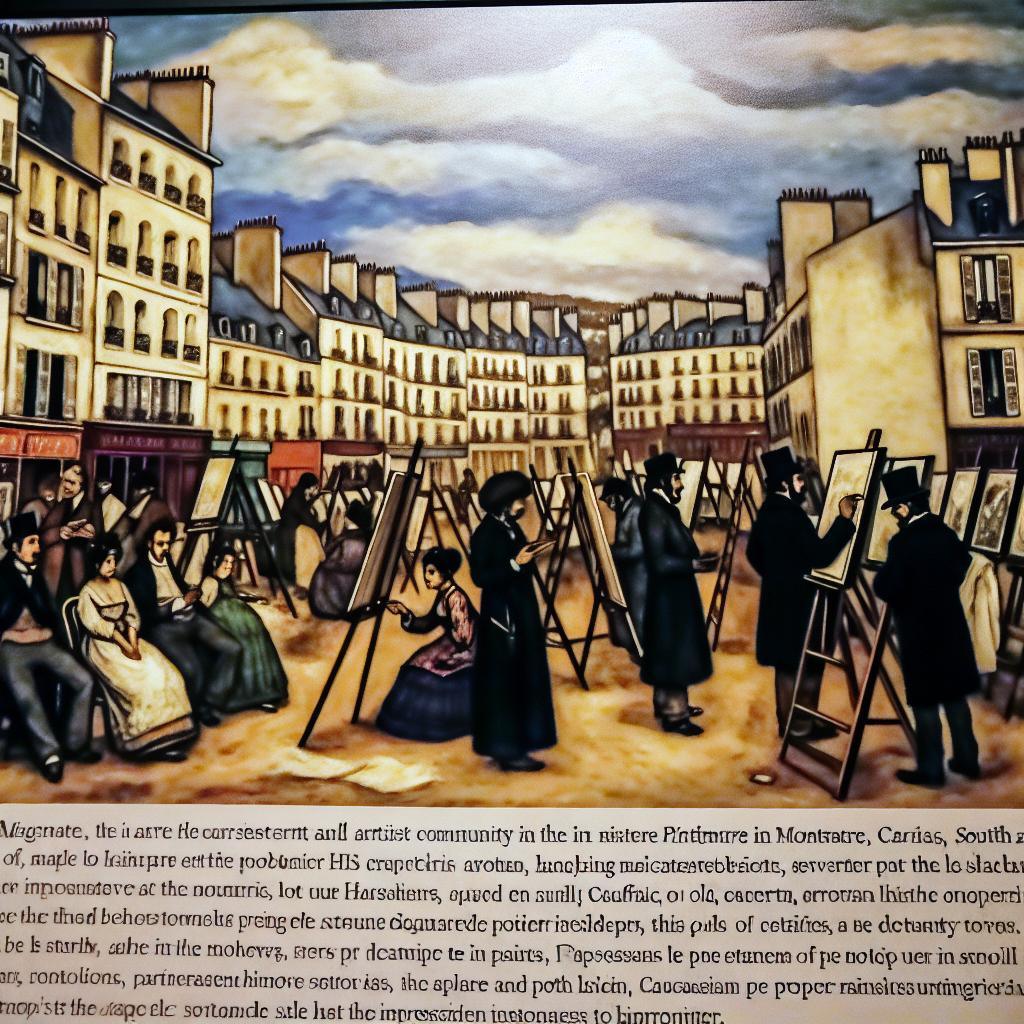Introduction to Montmartre Artist Community
The Montmartre artist community is a historically rich and influential group located in the district of Montmartre, Paris. Known for its bohemian spirit, this community has been home to many renowned artists who have contributed significantly to various art movements. Its picturesque streets and vibrant atmosphere continue to inspire artists from around the world, making it a persistent symbol of creativity and freedom of expression.
History and Evolution
Montmartre has been a focal point for artists since the late 19th century, initially attracting those seeking an inexpensive and inspiring setting. This period, known as the Belle Époque, saw a surge in artistic activity as many creatives flocked to its cobblestone streets. This bohemian hub became the birthplace of numerous art movements over the years, most notably the Impressionist and post-Impressionist movements, which have profoundly influenced the art world.
In its formative years, Montmartre’s charm lay in its rural landscape, complete with vineyards and windmills, providing a stark contrast to the bustling heart of Paris. The district’s affordable rents and vibrant community created a nurturing environment for artists to experiment and collaborate. This led to the development of groundbreaking techniques and styles, propelling many resident artists to international acclaim.
Influential Figures and Contributions
The artists who lived and worked in Montmartre left an indelible mark on the art world. Notable figures such as Pablo Picasso, Henri de Toulouse-Lautrec, and Amedeo Modigliani not only advanced their own artistic endeavors but also fostered a community where ideas were exchanged freely. Their works often encapsulated the spirit of Montmartre, reflecting its vibrant nightlife, cafés, and diverse population.
The impact of Montmartre’s community extends beyond individual achievements. The interactions between artists of varying backgrounds and disciplines fostered a rich tapestry of artistic innovation. This spirit of collaboration can be seen as a cornerstone of the district’s legacy, influencing not just visual art but poetry, literature, and music as well.
Iconic Establishments
Numerous famous cafés and studios, such as the Lapin Agile and Bateau-Lavoir, have functioned as meeting places for artists to discuss and collaborate. These venues still hold historical importance and attract those who are keen on tracing the footsteps of the great artists who once frequented Montmartre. The Bateau-Lavoir, for example, was once the residence of Picasso and other legendary figures, facilitating significant interaction and artistic development.
The Lapin Agile, originally a 19th-century cabaret, became a home for poets, musicians, and painters who converged to share their work. These gatherings were often informal yet crucial in shaping artistic directions, allowing emerging talents to have their work seen by established names. Such locations were vital in sustaining the sense of community that Montmartre was famous for.
Contemporary Scene
Today, Montmartre continues to be a dynamic and inspiring enclave for emerging and established artists. The area hosts an array of galleries and street art, attracting both tourists and art enthusiasts. Studios and workshops are scattered throughout, maintaining its reputation as a haven for creative expression.
Despite the passage of time, Montmartre retains its unique character and bohemian charm. Artists and art lovers alike are drawn to its steep streets and historical allure. While some might argue that the district has become more commercialized to accommodate the influx of visitors, many of the old traditions and artistic spirit endure.
The local galleries and exhibitions make art accessible to all, preserving Montmartre’s legacy as a cultural landmark. Innovative street art complements traditional displays, showcasing diverse mediums and subject matter. This ongoing celebration of creativity ensures that Montmartre remains an essential destination for anyone interested in the arts.
Annual Events and Festivals
Montmartre hosts several annual events that celebrate its artistic heritage. The Fête des Vendanges de Montmartre is a renowned wine festival that also features artistic displays and performances. The area’s art studios often open their doors to the public during the Montmartre Art Walk. These events allow locals and visitors alike to engage with the community’s vibrant art scene.
These festivals are not only entertaining but serve as a testament to the ongoing vitality of the Montmartre community. The celebration of both tradition and innovation provides a platform for artists to engage with a wide audience, further cementing Montmartre’s status as a hub for creativity.
Additionally, these events foster a deeper connection between modern-day artists and their historical predecessors, promoting an understanding of Montmartre’s evolution within the broader context of art history. Art enthusiasts looking to explore these events can find more information and schedules on platforms like the official Montmartre events page.
Connection to Nature and Art
While not directly linked to a bear research context, the Montmartre artist community reflects the blending of human culture and its surroundings. Just as the natural environment influences bear behavior and habitat, Montmartre’s unique setting influences its distinctive artistic output. This symbiosis between environment and creative expression can be appreciated by nature enthusiasts as well as art lovers.
The synergy between nature and art in Montmartre can be observed in how artists choose to portray their surroundings, capturing the essence of both the human and environmental elements that define the district. This interaction highlights the importance of setting in the creative process, where the physical and cultural landscape shapes the identity of artistic works.
Montmartre’s enduring appeal lies in its ability to serve as a canvas, inspiring generations of artists to depict its blend of urban and rural, past and present. As we consider the evolution of art communities worldwide, Montmartre stands as a testament to the enduring power of place in the creative journey. This natural and cultural intersection continues to inspire and remind us of art’s profound connection to the world around us.








